"Post Subsque" to save the music industry in the future, how should Japan face the new methodology and Japan?| Mynavi News Mynavi News Mynavi
Mikiro Enomoto (Enomoto / Mikirou)
1974 Tokyo student.He is a consultant specializing in the writer and music industry.He started working while studying at Sophia University and became the director of the live streaming program during the early days.After changing jobs to Pia, he became an independent music distribution expert.He was a lecturer at Kyoto Seika University until 2017.His contributions include WIRED, Bungei Shunju, Weekly Diamond, President, etc.He cooperated with the Asahi Shimbun and Bloomberg.He is a guest on NHK, TV Asahi, and Nippon Television.
Until the sub -school becomes a savior
Wakabayashi: Today is the second installment of "BEHIND THE SCENE" of "BLKSWN JUKEBOX", and the author of the "Music Business Centennial Revolutionary Created Era of Music".We will welcome you.With Enomoto, we joined in the special feature of "WIRED" "Future Music" (2014).I was very honored to write the obi sentence of "Music will bring the future".
Enomoto: I wrote a wonderful obi sentence."The forefront of Tech Innovation is in music. It's been 100 years, and so on. If you can't see the music business, you'll be left out of all the digital business."
Wakabayashi: I have the impression that music uses new technology first and other cultures such as movies will follow it.
Enomoto: Isn't the sub -school boom occurred since 2017?Subsque is probably the fastest music.It was around the end of 2001 that the US major label led and the flat -rate streaming service was born.The napster was the file -shared pioneering, and Napster was the first time to bring the common "unlimited listening" to humanity.That changed even how to listen to music.The music industry arrived 20 years ago to the answer "streaming sub -school", thinking about how to legalize the unlimited listening of NAPSTER.
But at that time, the sub -school did not work.Now there is a CTO in the record company, but at the time it was a content shop, so I was an amateur about technology.Moreover, the record companies quarreled and did not intervene in the songs.So Steve Jobs suggested the iTunes Store and worked well, so the sub -suk was treated as Owacon and did not see the sun, but Spotify caused a sub -school boom.That is the flow.
It was the iPhone that revived the subscriber, and the iPhone, a niche service, suddenly became a savior.I was involved in live distribution and music streaming since around 2000, but it was too early and it didn't work.Even if you can see the future, there is no point in when the hardware that realizes it will be born.I was a creator, so I didn't have that idea.This book is the result of studying as I learned a lot, "How did it work at that time?"
Steve Jobs, "Goodbye, and thank you iTunes -from Apple's achievements that led music to the digital era>
Wakabayashi: Can you say the same about the past?
Enomoto: That's right.Around 1930, radio began to spread in the United States.Radio was originally a military wireless technology, but the music content that Sanov, called "David's Father", to spread the radio is music.
At that time, there was the world's first label called Edison Records -Edison was also the father of the record industry -sales had fallen.The sound of the phonograph at that time was not good because it used wax tubes, but the radio is electronic and does not deteriorate the sound quality.The price of the record was about 10,000 yen in terms of the current sense, so people could not buy so much, but the radio that can be heard for free has better sound and the content is abundant, so music lovers use radio.It was a flow of buying.
As a result, the spread of the radio has made record sales one -25th.The impact was far beyond the music recession on the Internet.Over the next 20 or 30 years, the music industry had innovated, and the record was picked up.Therefore, it is Chapter of this book that we, juniors, wrote that if we did not forget the creativity of innovation, we could be revived no matter what crisis came.
Technology = not innovation
Wakabayashi: What is the most important message in this book?
Enomoto: The music industry has been crisis many times, but it has been overcome by innovation.
The music industry is now one of the most damaged pandemic industries.But looking back on history, I always get over it by creating something new.In the cultural industry, music was the first to be terrible, so the crisis of the music industry was always unprecedented, so I had to create a new answer on my own.A new answer to the current crisis -I call it a "post -subsque" -Music, music industry is trying to create it.The example is listed in the last chapter.
Japan imitated and followed because Spotify is popular in the world, but such a mind cannot create a new answer.I've been playing the role of the flag of Subsque since 2012, but I have said that Japanese problems cannot be solved alone.I was appealing, "Would you like to make a sub -skirt + α?"
In the future of the music industry, not actually streaming but SNS is important> (Photo by Griffin Lotz)
Wakabayashi: In this book, Sony plays the role of Sony from the late 70's to the 1980s, and the advancedness of Japan is also heated through the transition from the I mode to the ringtone from the I mode.
Enomoto: As you said, the other theme is "Japan".The European and American music industry may be able to regain the golden age with a subscriber, but Japan has a resale system and has a high CD price, so there is a difference from other countries.In addition, the monthly fee is 980 yen compared to 10 euros per month (1300 yen).It is a duty to create a new model that fills this.
However, Japan has lost to the United States and China, and we are in a broken heart, assuming that we can no longer make new things.However, it was Sony in Japan that changed the music industry around the world by creating mobile radio, walkman, and CDs, and Japan was born in Japan.
The Internet used on a personal computer is basically a free service world, but paid services are used on smartphones.The pioneering is i -mode.Japanese people are masochistic as "Garakae", but Japanese mobile phones are classified as early smartphones in Europe and the United States.
In addition, i -mode is a 300 yen sub -school per month.The i -mode was started by the former editor -in -chief of "Torabayu", and started applying the business model of the magazine.。Sony's strategy was trying to beat the iPod and iTunes on "music mobile phones" and "Walkman mobile phones" that distribute music on mobile.In fact, the sales of the iTunes Store in Japan won because it was one -tenth of Chaku -Uta.Japan had already realized even "Subsque + α" at the time of i -mode.
If the defeat in Japan could spread all over the world, Jobs had a sense of crisis and was born with the idea of "making a mobile phone."Japan was called mobile and mobile content, so it was called Mobile, but Jobs set up a leap frog.
This flow was all happening along the technical roadmap.First, the first generation (1G) of the mobile phone was analog distribution.Here the United States created a mobile phone.In the second generation (2G), letters and images can be handled on mobile phones due to digitalization, and Japanese docomo created i -mode, linked mobile and the Internet, and set up a leap frog in the United States.
The third generation (3G) was a mobile band of mobile phones, but in the early days the line was not so thick that I could handle videos, so it was au that set up a leap frog to DOCOMO with music, chaku -ta.Sony, who worked with au, was trying to set up a leap frog on the iPod on a music mobile phone.
However, the technical roadmap was approaching the second half of 3G, and was about to enter the video on a mobile phone.Furthermore, the CPU has been saved by the fact that a smaller device than a laptop can be realized.Jobs's iPhone was launched in the Japanese electronics industry using both this CPU and communication speed technical roadmaps.
Transfer brought by i -mode
Wakabayashi: In this book, the story of i -mode's launch press conference twice will appear.The first time did not fly and did not fly, but the second time, Ryoko Hirosue was introduced, and the woman became a driver for the spread of i -mode.Innovation is an engineer Doriven, and it has been talked about from a male perspective that it is bad, but it is a good example of spreading as a woman.
Enomoto: Ryoko Hirosue appeared in a Pocketbell commercial when he was a high school student.Pocketbell was originally a machine for business communication, but since then, high school girls have begun to communicate.DOCOMO thought that Ryoko Hirosue, who became an icon of communication by pocketbells, would be an icon in i -mode.
CM in i -mode that Ryoko Hirosue appeared
Wakabayashi: If you look at it now, the conversion that has occurred seems to have slid a male fundamental "content space" into a "communication space" led by women.The i -mode may have presented it ahead of the world.I thought again that it is important that the recipient could change the structure of the service.
For example, how to accept K-POP, how to use Fundam technology and networking, a protocol that is different from the content acceptance of male fans so far is operating.This is not necessary to say "male / female", but it is a conversion of vertical to horizontal, content from content, and such value axis.
Enomoto: Or the sensitivity to reason, the right brain against the left brain.The iPod used it to beat Sony's Walkman.Jobs asked former Sony's sword (Yoshiaki) about the strategy to sell the iPod in Japan, and suggested to target women on fashion routes.So, when I targeted iPod mini and iPod Shuffle as a fashion item, I hit Ginza OL.So -called sensitivity marketing.
Wakabayashi: I thought while reading a book that Japan could actually be a good field.It is easy for Japan to think that "technology" is our specialty, but it may not be there.
Enomoto: That's right.Innovation is not "= technological innovation", but "technical innovation + creativity".Is the creativity part called "sensitivity"?In Japan, female students, OLs, and aunts often have a boom.Although it is a country that is strong in sensitivity marketing, I feel that he has forgotten its strengths.
So, in the final chapter was a Chinese post -subcook.
The music was at the top with a subscriber, but it was all over the sub -skirt.However, the game industry has a sub -skop and package, and smartphone games also have a billing and micropay.He was making a variety of business models, and the game industry was leaping the music industry.So, I thought that the "plus alpha" to the music sub -suk would be charged each time the smartphone game was successful.The Chinese music sub -school has realized this.
The sales of a huge music company called Tencent Music in China are 30 % of advertising and sub -suku, the same business model as Spotify.However, "social entertainment" accounts for 70 % of sales.The contents were called "money" in Japan and "gifting" in English.In other words, the mechanism in which a cute girl sings in karaoke and the followers tribute in gifting.
From the Chinese version of Spotify, listed on the US Stock Market (Photo by Spencer Platt/Getty Images)
Okuma: I don't see much in the current music industry.
Enomoto: In Japan, if you do "singing" with a major artist karaoke sound source, you will be angry, and if you earn, you will be a trial.In China, the copyright management is sweet, so an amateur sings with karaoke sound sources and has a business in which viewers are gifting.
The reason was the live distribution site / chat room of the game called "YY". Around 2012, when I investigated it in -house, it was a state where a cute girl was doing karaoke and watching it without talking about the game. So, if I distributed a virtual karaoke concept ticket for members for free, the ticket was sold at a high price on the auction site. There were users who wanted to buy voting rights to win their favorite girls. So the Chinese noticed, "I can't do this." You imitated a Japanese LINE stamp and sold a stamp to give it to gifts. If the amount of money moved, the Communist government could get angry, so the upper limit per time was set to 2 million yen. If you thought that no user would throw 2 million yen, there were many.
Wakabayashi: That's amazing ...
Enomoto: The boom of "Social Karaoke" has begun.When you launch a Chinese sub -school app, the letters flow on the jacket, like Nico Nico Douga.There is something like a LINE stamp behind it, which sells it.
Moreover, the button of the gift is more noticeable than the play button, and then there is a microphone button.Pressing the microphone button will cut the vocal, so you can sing and upload it yourself and share it with your friends.Friends gifts on it.
The aunts in their 50s and 60s in local cities were addicted to this.One aunt sings and her friend's aunt gives each other with a gifting stamp that can be redeemed as "amazing".This situation is unexpected.
From "YY" homepage
Wakabayashi: Karaoke is social from the beginning.Use music as a communication.
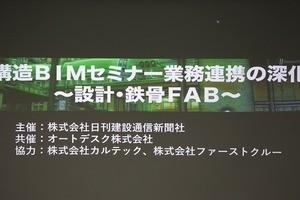
Enomoto: It's like Chaku -Uta, that is, playing with music.Until now, the music industry has been using copyright and original rights to monetize "music".So is the CD and the sub -suk.However, from now on, we must go in the direction that the copyright and the right -handed rights are "communicating with music".This is also the flow of the post subscd.
And looking back on history, the Omoto was created by Japan.Karaoke is an invention of Japanese, and in the 1990s CD Golden Age, there was a mechanism to buy singles, practice karaoke, gather together and sing karaoke.It is China who did it digitally.Regarding this Chinese gifting, Goldman Sachs Securities analysts say that it is a digital version of the AKB48 handshake ticket commercial law.It should have been Japan that made such a business model.
What I propose is, "Let's do this legally."By doing it legally, sales are allocated to record companies and artists.China has invented that C to C will be introduced to the sub -squek -a custom that amateurs and fans exchange money, but if you do it in Japan, you need to handle the rights.For example, if you sing using a karaoke sound source and make a profit, you will allocate 30 % to the distributor, 30 % to the record company, and 40 % to the singer.I am making that kind of suggestion.
To be honest, "throwing 2 million yen to a cute girl" is an unprecedented story.However, its essence is important.Humans want to pay and help what they want to support.So it can be an artist.In the first place, artists are such occupations, so you can use them effectively.
The key to the post -sub -school is "Engagement"
Enomoto: I think one of the core of the post -sub -school is not just listening to music, but to enjoy it.The other is to prepare a place for engagement to artists and express affection.
In this era, you don't have to buy a CD, but you buy it or buy a T -shirt or towel at a live venue because there is only a way of expressing affection.You have to make a place to express that affection using more technology.That is one of the missions of the post -sub -school.
I don't want to imitate China.The United States also noticed the Chinese post -sub -suk, but did not imitate.Tim Westerglen, one of the founders of "Sessions," was inspired by China.
When he made Pandora, he left Pandora and helped with the game business, he learned that the business model was more abundant than music.In China, live distribution has been a boom for a long time since Corona's evil, and the live distribution that started in the game was a huge boom in the wake of music.Tim Westerglen thought it was "this."
He made an advertising model pandora close to a sub -skirt, and succeeded in obtaining an unnamed musician audience.But I couldn't create a place to monetize it.So I knew Chinese gifting and realized that this was something that could not be done in a sub -skirt, a monetary of musicians' activities.
The sessions he started is a live distribution platform, but also created a "promotion engine."That will advertise on other SNS advertisements for artists.The resources are online tickets and gifting sales.Sales are 30 % for Apple taxes, 30 % are sessions, and the remaining 40 % are allocated to artists, but 30 % of Sessions gets an artist's advertising cost.So you created a mechanism to make a revenue sharing.
Tim Westerglen, Okuma: This service is good. Enomoto: I like and tweet for fans to support, but in short, I want to spread it.It would be better to advertise the artist than to give money directly.This is the mechanism created by Sessions, which boosts strong thoughts in the engagement that "I want others to like this artist as well."Even if you bring Chinese money to the United States as it is, it will not be accepted.He thought that it was necessary to create a more beautiful relationship between the gifted fans and the musicians who received it, and created a composition that gifting would advertise an artist who loves the money. In other words, Tim Westerglen did not imitate China.A creative idea came out of the high desire to make musicians live in music.I think creative is that kind of thing. "Sessions" Wakabayashi: The story of Tanimachi, who is throwing earlier, is that the musician was once held by a patron nobleman, which could be tied up.It's a bit scary that such a part is exposed. Enomoto: That's right.Not beautiful. Wakabayashi: It's important to design a platform that makes it not just directly exchanged. Enomoto: Yes.In other words, I want to make communication between artists and fans more beautiful.This can also be a driver that causes creative innovation. For example, a beautiful device that can be operated with only fingertips, an iPhone, was born because Jobs, who had a strong aesthetic sense, was so ugly that the previous mobile phone was too ugly.I think "beauty" will be a creative driver. No matter how popular the music is, it is an art that deals with beauty.So how do you create a beautiful relationship between fans and artists?That is the driver for making Japan more beautiful, in response to the wonderful original answers that China issued. Wakabayashi: How is the possibility of exchanging sound sources with a blockchain or making a limited copy? Enomoto: That's possible.The great blockchain is the technology to crush copies.So, if you distribute a limited 100 albums with blockchain technology, it can be a limited -edition artwork with a limited copy.I think that it is possible to create a system that allows artists and record companies to make sales of artists and record companies every time they resell them with a premium value.The reason why digital data is not worth it is because it can be copied indefinitely, but since technology that limit the number of copies has appeared, I think it can be used somewhere. Wakabayashi: That's right.It may not be possible to have something like an art gallery that only deals with such works. Okuma: It seemed that this book was really good to think about how to perceive music and art. Wakabayashi: How music is worthy in life -some people only use music as just BGM.That was asked by the sub -suk.Changing the service also changes the distance between ourselves and music.That's interesting. Innovation over musical instruments Enomoto: Apart from the business model of the music industry, the most important music itself has not changed so much depending on the technology.That's because IT has dramatically advanced in the last quarter century, but that technology has not been used as a change in the instrument itself.However, there is always the moment when technology changes the instrument historically.As mentioned at the end of my book, I think IoT will probably change the instrument.I think that a new instrument will be created by pursuing the AI of the user interface, and a new mega trend will come out.That's what I want to know more. So far, samplers and synthesizers have appeared, but the keyboard or user interface has not changed.If something that can be changed, a new era will begin.For example, you can imagine a musical instrument that is impossible with a physical model and make a sound in a virtual space, but there is no interface that brings out the possibilities yet.Maybe it will be a brain user interface that doesn't use your hands. Okuma: That's interesting.You are released from the technique. Wakabayashi: The appearance of electric guitars and samples was a kind of democratization, and before that, only trained people could play instruments, but new instruments were no longer.However, even if a new instrument spreads, it does not always go in the direction of making original new music. Enomoto: I sometimes have such a dream.If you think that the music is ringing and this kind of feeling is good, the music will change to a good feeling.In that way, when you do something that seems to be composed in your dreams, and you are impressed and wake up, tears are flowing.In such a way, when "strong AI" is born, anyone may be able to do producer -like production. Okuma: The good thing about music is that you can participate in the culture of music, even if you can't play music.For example, writing a review.The social entertainment I mentioned earlier is close to it. Wakabayashi: That's right.In the Great Full Dead community, fans share live tape.K-POP communicates by making videos by themselves based on the story of the artist.Fans are participating and making culture. Enomoto: I've been dissatisfied with the fact that the fans have just pressed the "likes" button since the Internet.Unless you are good at linguistic abilities like Mr. Wakabayashi, ordinary listeners cannot verify the splendor of music, but the Internet is basically a textbook.However, it is difficult for ordinary people like us to write what I feel by touching a good work like a love letter, so everything converged to "like" and stamps.So I've always thought, "Is there a mechanism that can express what the listeners listen to music more richly?" When VR technology progresses, you may be able to listen to music while talking with friends, and create a space where you can share your senses even in incomplete languages such as "good" or "yes."But it will be difficult until the size and quality of smart glasses exceed the threshold.Until then, it may be historically correct to go in the direction of creating VR communication with sound instead of video.Looking at the clubhouse boom, I feel so. The title of the book, "music brings the future" means that innovation has begun from "sound", which is lighter in both data and harder than video. "Music brings the future" Mikiro Enomoto / Author Du books Now on sale Official page: https: // Diskunion.net/dubooks/ct/detail/dubk284 BLKSWN JUKEBOX: BEHIND THE SCENE #2 Mikiro Enomoto "From the forefront of music to see the future of business and society" Held on Friday, February 12, 2021 Venue: BLKSWN WELFARE CENTER (Kurotori Welfare Center) Sponsored: BLKSWN JUKEBOX Support: Ubgoe Shooting: Yuri Machibu Sound: Yoshihiro Yamaguchi (Magic Mill Sounds) Production: Makoto Miyano (SONG X JAZZ)

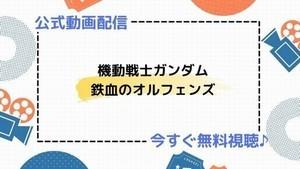
![10th generation Core i5 equipped 9.5h drive mobile notebook is on sale at 50,000 yen level [Cool by Evo Book] 10th generation Core i5 equipped 9.5h drive mobile notebook is on sale at 50,000 yen level [Cool by Evo Book]](https://website-google-hk.oss-cn-hongkong.aliyuncs.com/drawing/article_results_9/2022/3/9/4a18d0792cae58836b71b9f591325261_0.jpeg)
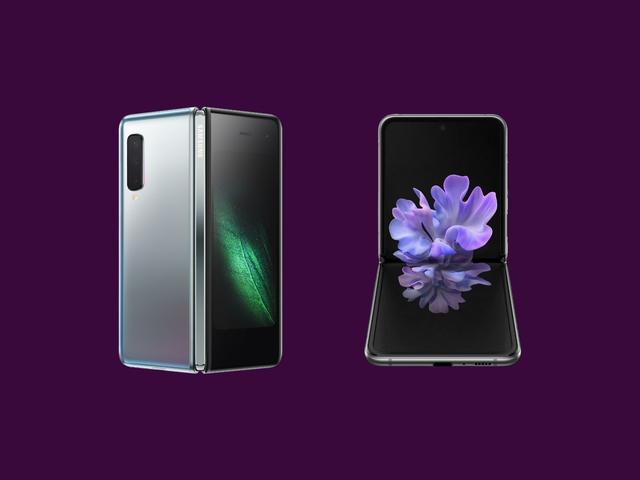


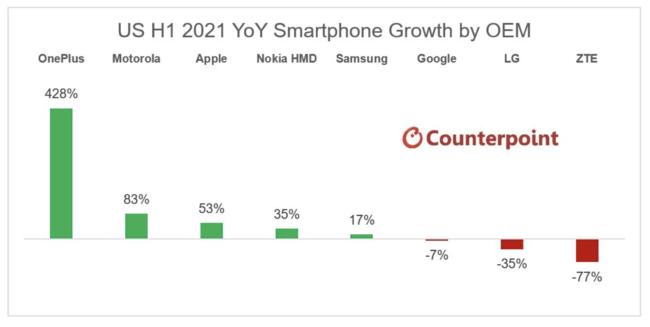
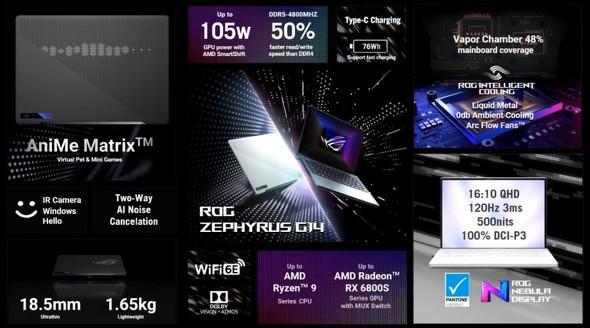
![[Amazon time sale in progress! ] 64GB microSD card of 1,266 yen and wireless earphone with noise canceling function of 52% off, etc. [Amazon time sale in progress! ] 64GB microSD card of 1,266 yen and wireless earphone with noise canceling function of 52% off, etc.](https://website-google-hk.oss-cn-hongkong.aliyuncs.com/drawing/article_results_9/2022/3/9/c88341f90bab7fe3ce1dc78d8bd6b02d_0.jpeg)
